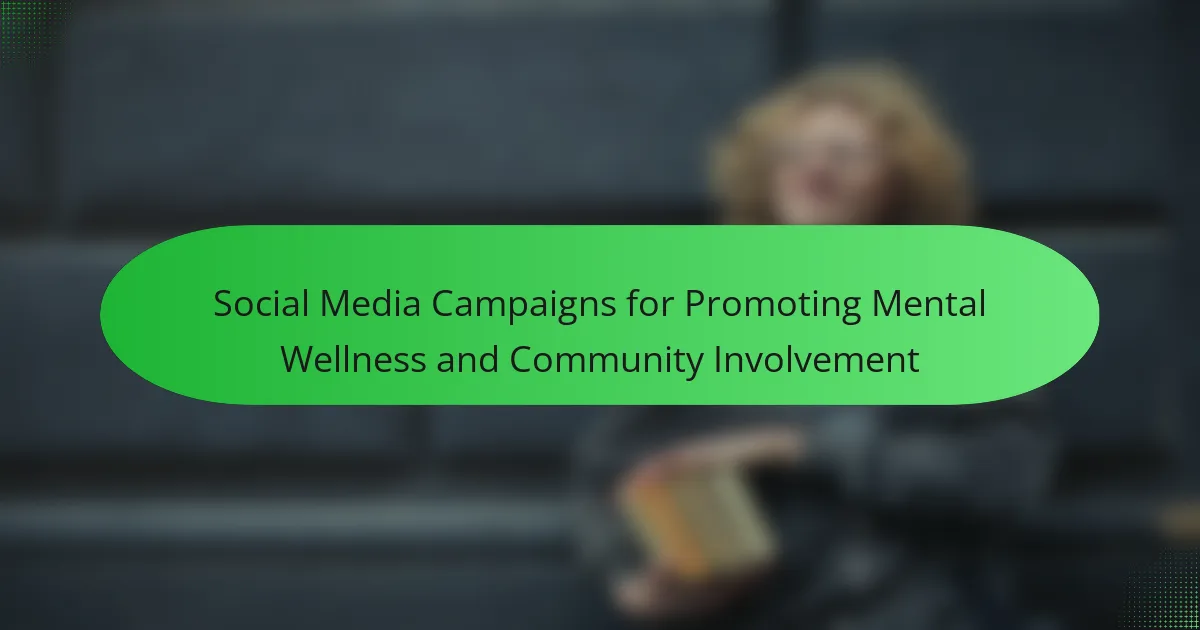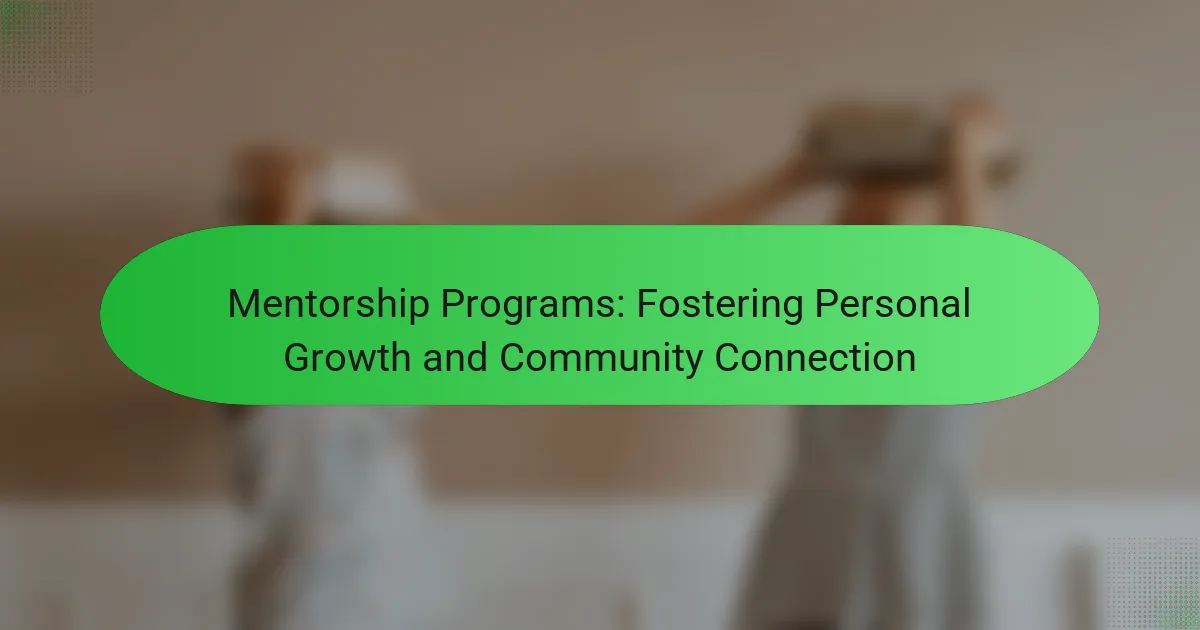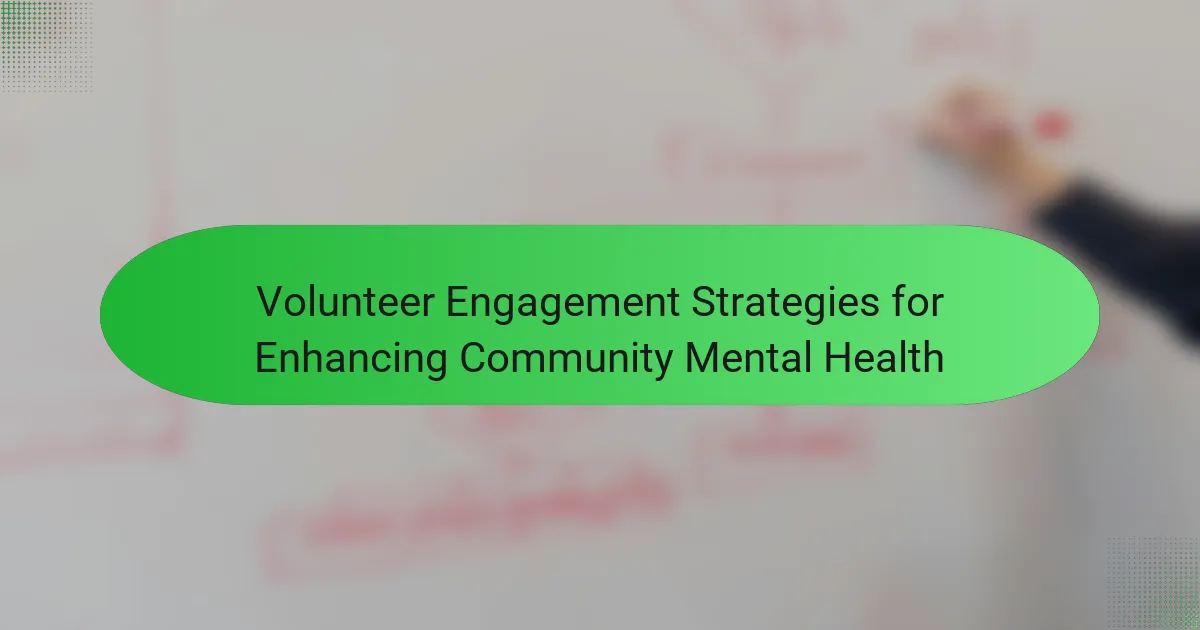Art therapy workshops enhance emotional well-being and foster community connections. They create a safe space for creative expression, enabling participants to explore their emotions and share experiences. These workshops adapt to diverse needs, incorporate various art forms, and address cultural contexts. By focusing on skilled facilitation and structured activities, they empower individuals and strengthen community resilience.
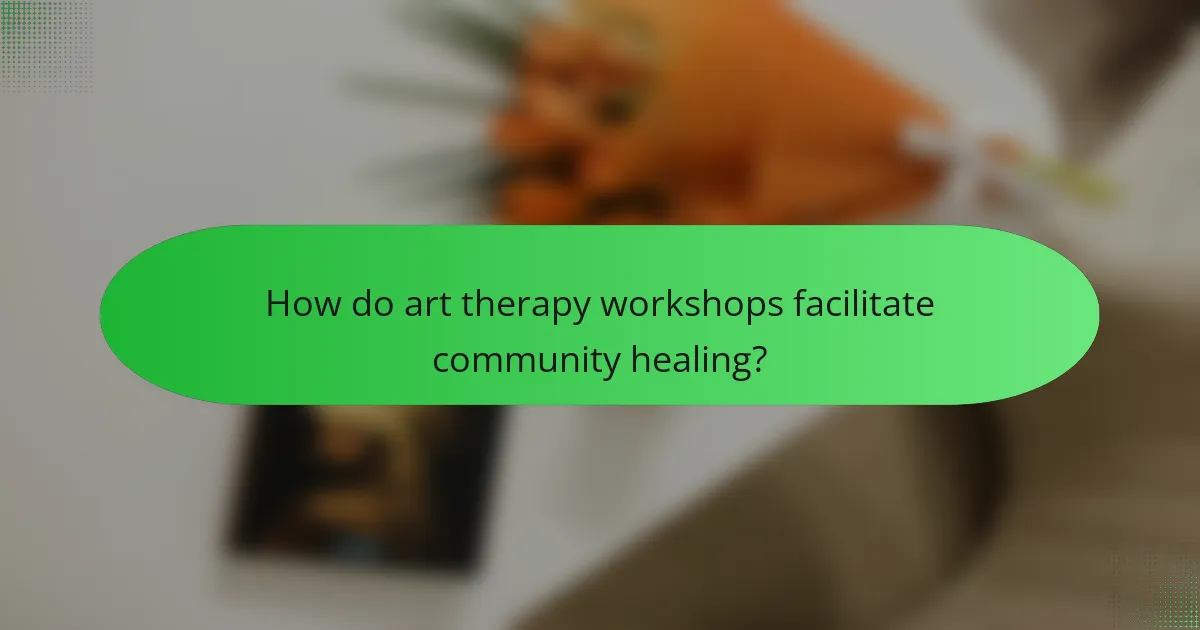
How do art therapy workshops facilitate community healing?
Art therapy workshops facilitate community healing by providing a safe space for creative expression. Participants engage in artistic activities that promote emotional release and connection. These workshops foster a sense of belonging, allowing individuals to share experiences and support one another. As a result, they enhance mental well-being and resilience within the community.
What psychological benefits do participants experience?
Participants in art therapy workshops experience enhanced emotional resilience, improved self-esteem, and better stress management. These psychological benefits arise from creative expression and community support. Engaging in art fosters a sense of belonging and encourages personal reflection. Research indicates that such workshops can reduce anxiety and depression, promoting overall mental well-being.
Which art forms are most effective in therapeutic settings?
Art therapy workshops utilize various art forms effectively, including painting, music, and drama. These forms promote emotional expression, enhance communication, and foster community connections. For example, painting allows individuals to visualize feelings and experiences, while music can evoke memories and facilitate relaxation. Drama encourages role-playing, helping participants explore personal narratives. Each art form serves as a unique tool for healing and empowerment in therapeutic settings.
How do workshops promote social connections among participants?
Art therapy workshops foster social connections by encouraging creative collaboration and shared experiences. Participants engage in artistic activities, which promote open communication and emotional expression. As a result, individuals build trust and rapport, enhancing community bonds. These workshops often include group discussions, allowing participants to share personal stories and insights, further strengthening relationships. The creative process also reduces social barriers, making it easier for diverse individuals to connect meaningfully.
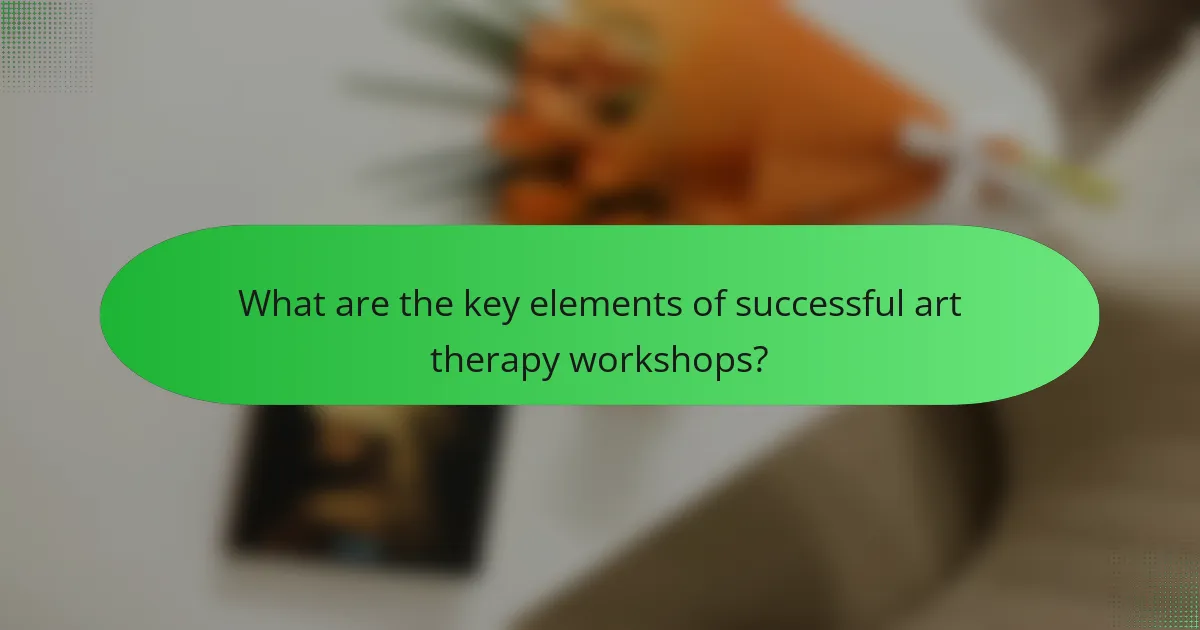
What are the key elements of successful art therapy workshops?
Successful art therapy workshops focus on creating a safe environment, fostering creative expression, and encouraging community engagement. Key elements include skilled facilitators who guide participants, structured activities that promote emotional exploration, and opportunities for reflection and sharing.
Effective workshops often incorporate diverse art forms, such as painting, sculpture, and collage, to cater to different preferences and abilities. Additionally, integrating feedback mechanisms helps assess participant satisfaction and therapeutic outcomes, enhancing future sessions.
The unique attribute of these workshops is their ability to adapt to the needs of various populations, including children, trauma survivors, and individuals with mental health challenges. This adaptability increases the workshops’ relevance and impact in community healing and empowerment.
How can facilitators create a safe and supportive environment?
Facilitators can create a safe and supportive environment by establishing trust, fostering open communication, and encouraging creative expression. Trust is built through consistent and respectful interactions. Open communication allows participants to share their thoughts without fear of judgment. Encouraging creative expression helps individuals explore their feelings and experiences, promoting healing and empowerment. Additionally, setting clear guidelines for participation enhances comfort and safety, allowing participants to engage fully in art therapy workshops.
What role does structure play in workshop effectiveness?
Structure significantly enhances workshop effectiveness by providing a clear framework for participants. A well-defined agenda fosters focus and engagement, allowing creative expression to flourish. Additionally, structured activities promote collaboration, ensuring that each participant feels valued and empowered. The balance between guidance and freedom is crucial, as it enables individuals to explore their creativity while benefiting from collective support. Ultimately, a thoughtful structure maximizes the therapeutic potential of art therapy workshops, leading to meaningful community healing.
Which materials enhance creative expression in therapy?
Materials that enhance creative expression in therapy include paint, clay, fabric, and mixed media. These materials facilitate emotional exploration and self-discovery. For example, paint allows for color expression, while clay provides tactile engagement. Each medium offers unique attributes that cater to different therapeutic needs, fostering community healing and empowerment.
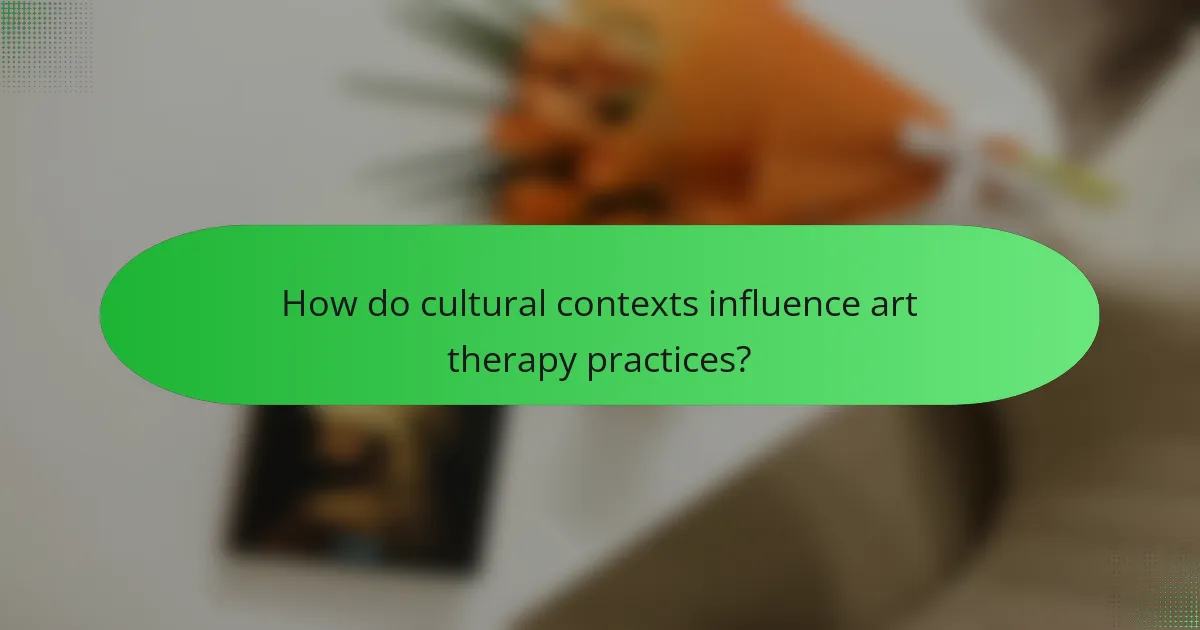
How do cultural contexts influence art therapy practices?
Cultural contexts significantly shape art therapy practices by influencing themes, materials, and participant engagement. Diverse cultural backgrounds inform the symbolic meanings of art, impacting how individuals express emotions and experiences. For instance, in some cultures, communal art-making fosters collective healing, while in others, personal expression may be prioritized. Additionally, culturally relevant practices enhance the therapeutic experience, making art therapy more relatable and effective. Understanding these cultural nuances ensures that art therapy workshops resonate with community values and promote empowerment.
What unique approaches are used in different regions?
Different regions employ unique approaches in art therapy workshops to enhance community healing and empowerment. For instance, Indigenous communities often integrate traditional art forms and storytelling, fostering cultural connection. In urban areas, workshops may focus on contemporary issues, using mixed media to address social challenges. In rural settings, nature-based art therapy utilizes local landscapes, promoting environmental awareness and personal reflection. Each approach reflects the community’s specific needs and values, enhancing the therapeutic experience.
How do local traditions shape artistic expression in therapy?
Local traditions significantly influence artistic expression in therapy by integrating cultural symbols and practices into art therapy workshops. This connection fosters community healing and empowerment. Art becomes a medium for individuals to express their unique experiences while honoring shared heritage. For instance, traditional motifs and storytelling techniques can enhance participants’ emotional engagement, creating a deeper therapeutic experience. By valuing local traditions, art therapy workshops can cultivate a sense of belonging and identity, ultimately promoting resilience within the community.
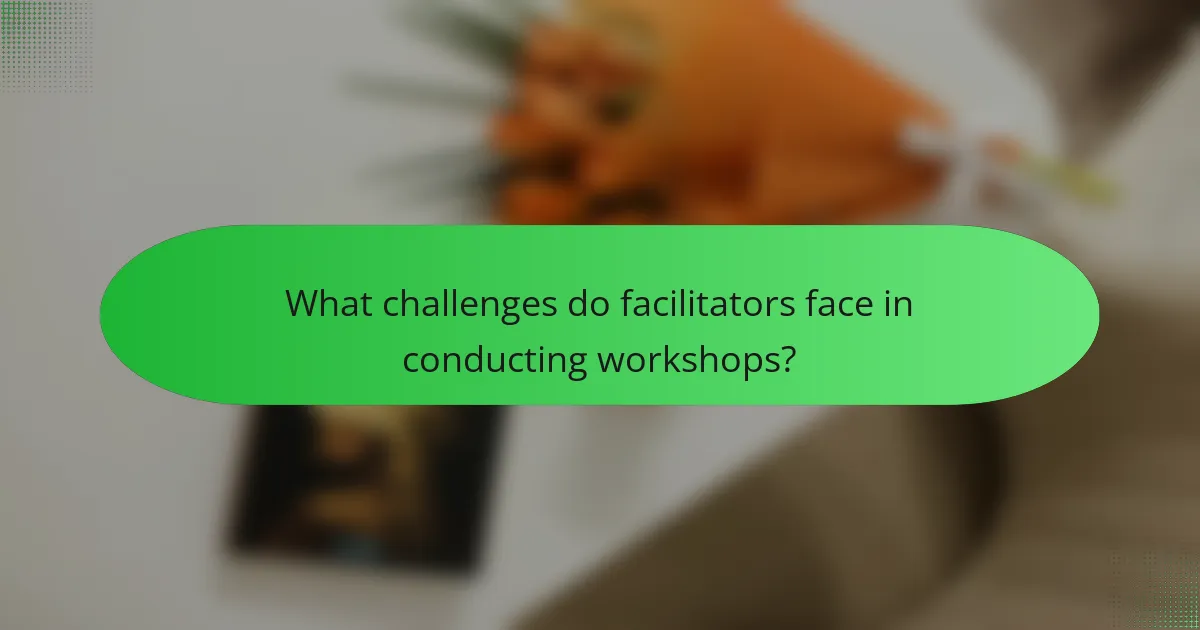
What challenges do facilitators face in conducting workshops?
Facilitators in art therapy workshops face challenges such as managing diverse participant needs, creating a safe environment, and addressing emotional responses. These aspects require skillful navigation to foster creative expression and community healing.
Diverse participant needs may include varying artistic skills and personal experiences. Facilitators must adapt activities to ensure inclusivity and engagement. Creating a safe environment is crucial for participants to express themselves freely, often necessitating strategies to build trust and rapport.
Emotional responses can arise unexpectedly during sessions, requiring facilitators to handle these situations sensitively. Balancing emotional support with the workshop’s objectives can be complex but is essential for effective empowerment through art therapy.
How can facilitators address diverse participant needs?
Facilitators can address diverse participant needs by creating an inclusive environment in art therapy workshops. They should assess individual goals and backgrounds, encouraging personal expression through various artistic mediums. Adaptability in techniques enhances engagement and fosters empowerment.
Facilitators can implement the following strategies:
1. **Pre-Workshop Surveys**: Gather information on participants’ backgrounds and artistic preferences.
2. **Flexible Activities**: Offer a range of art forms, such as painting, sculpture, and digital art, to cater to different interests.
3. **Small Group Discussions**: Encourage sharing in smaller settings to build comfort and trust among participants.
4. **One-on-One Support**: Provide individualized guidance during activities to address specific needs.
5. **Cultural Sensitivity**: Incorporate diverse cultural perspectives to resonate with all participants.
6. **Feedback Mechanisms**: Regularly solicit participant feedback to adjust the workshop flow and content accordingly.
These approaches ensure that all participants feel valued and supported, enhancing their creative expression and community healing.
What strategies help overcome resistance to participation?
Engaging participants in art therapy workshops requires strategies that foster trust and connection. Building a welcoming environment encourages openness. Incorporating personal stories can enhance relatability and reduce resistance. Providing clear goals for each session helps participants understand the benefits of their involvement. Lastly, offering flexible participation options allows individuals to engage at their comfort level.
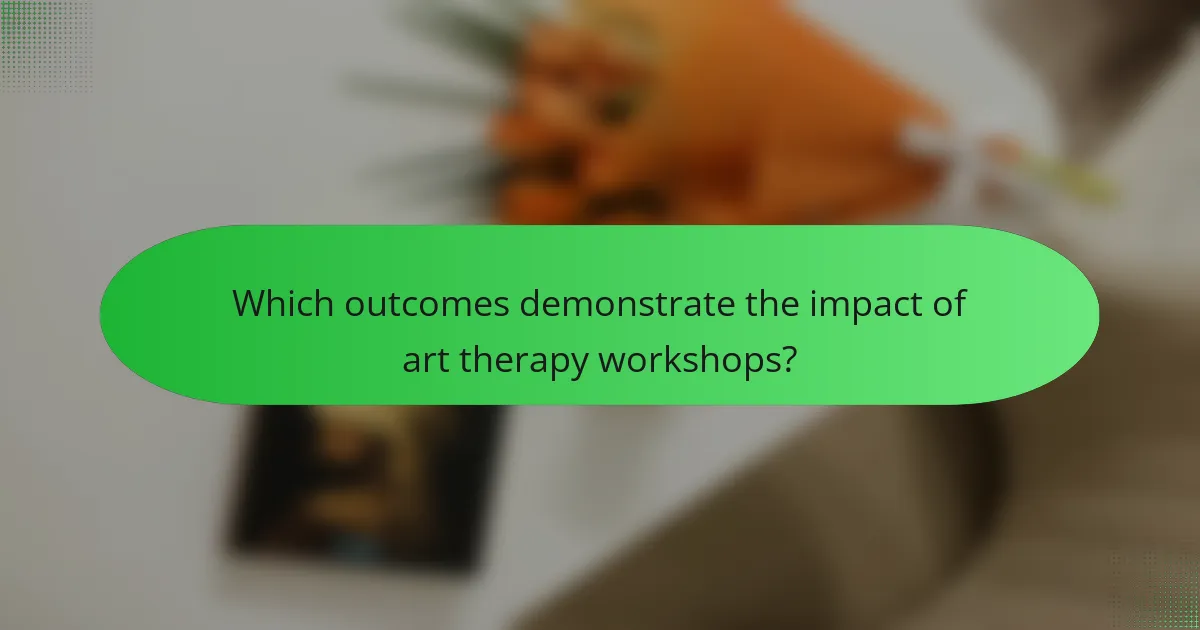
Which outcomes demonstrate the impact of art therapy workshops?
Art therapy workshops significantly enhance emotional well-being, foster community connections, and promote personal empowerment. Participants often report reduced anxiety and increased self-esteem. Research shows that 85% of attendees experience improved mood after sessions. Additionally, these workshops encourage interpersonal relationships and creative expression, leading to a stronger sense of belonging. Overall, art therapy workshops yield measurable benefits for individuals and communities alike.
How can success be measured beyond participant feedback?
Success in art therapy workshops can be measured through various quantitative and qualitative metrics beyond participant feedback. Key performance indicators include participant engagement levels, behavioral changes observed in community interactions, and the number of artworks produced that reflect personal narratives.
Tracking long-term outcomes such as improved mental health statistics in the community provides valuable insights. Additionally, collaboration with local health organizations can yield data on the workshops’ impact on community well-being.
Utilizing pre- and post-workshop assessments can help quantify emotional and psychological shifts, revealing the workshops’ effectiveness in fostering empowerment. Finally, case studies documenting individual transformations showcase the unique benefits of creative expression in healing.
What long-term effects do participants report?
Participants in art therapy workshops report improved emotional well-being, enhanced self-esteem, and better social connections. They often experience reduced anxiety and stress levels, fostering a sense of community. Many individuals highlight the therapeutic benefits of creative expression, which aids in processing trauma. Long-term engagement in these workshops can lead to sustained personal growth and empowerment.
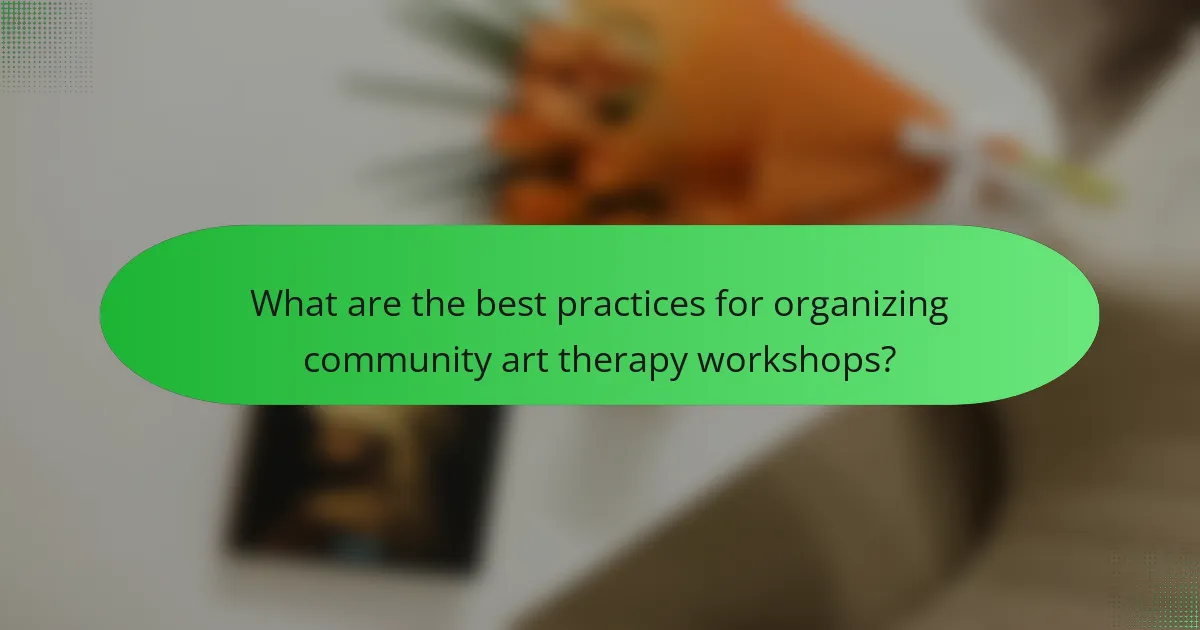
What are the best practices for organizing community art therapy workshops?
Organizing community art therapy workshops requires thoughtful planning and execution. Focus on creating a welcoming environment, selecting appropriate materials, and engaging skilled facilitators.
1. Define clear objectives for the workshop, such as promoting healing or fostering creativity.
2. Choose a suitable venue that is accessible and comfortable for all participants.
3. Select diverse art materials to cater to different preferences and skill levels.
4. Promote the workshop through community channels to encourage participation.
5. Ensure trained facilitators lead the sessions to effectively guide participants.
6. Gather feedback post-workshop to improve future sessions and address community needs.
How can facilitators effectively market their workshops?
Facilitators can effectively market their art therapy workshops by emphasizing community healing and empowerment. Utilize social media platforms to showcase participant testimonials and creative outcomes. Collaborate with local organizations to reach target audiences. Offer free introductory sessions to generate interest and build trust. Leverage email newsletters to share success stories and upcoming events.
What common mistakes should be avoided when planning sessions?
To avoid common mistakes when planning art therapy workshops, focus on clear objectives, participant engagement, and logistical details. First, ensure the goals of the workshop align with community needs. Next, involve participants in the planning process to foster ownership and relevance. Lastly, address practical aspects like space, materials, and scheduling to create a conducive environment for creative expression.
Which partnerships enhance the reach and effectiveness of workshops?
Collaborations with mental health organizations, local artists, and community centers significantly enhance the reach and effectiveness of art therapy workshops. These partnerships provide access to diverse audiences and resources. For example, mental health organizations can offer professional guidance, while local artists bring creative expertise. Community centers facilitate space and promote workshops, increasing visibility and participation. Engaging with schools can also introduce art therapy to younger demographics, fostering early emotional expression and resilience.
